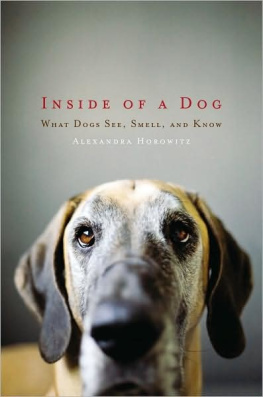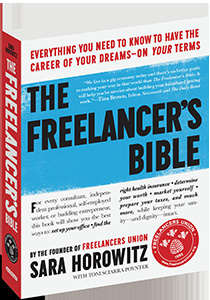Thank you for purchasing this Scribner eBook.
Join our mailing list and get updates on new releases, deals, bonus content and other great books from Scribner and Simon & Schuster.
C LICK H ERE T O S IGN U P
or visit us online to sign up at
eBookNews.SimonandSchuster.com

Contents
I NANIMATE C ITY:
T HE M ATERIAL OF THE L ANDSCAPE
A NIMATE C ITY:
E VERYTHING T HAT W ONT S TAND S TILL
S ENSORY C ITY:
T HINGS T HAT H UM , S MELL, OR V IBRATE
to Ogden:
look!
Amateur Eyes
You missed that. Right now, you are missing the vast majority of what is happening around you. You are missing the events unfolding in your body, in the distance, and right in front of you.
By marshaling your attention to these words, helpfully framed in a distinct border of white, you are ignoring an unthinkably large amount of information that continues to bombard all of your senses: the hum of the fluorescent lights, the ambient noise in a large room, the places your chair presses against your legs or back, your tongue touching the roof of your mouth, the tension you are holding in your shoulders or jaw, the map of the cool and warm places on your body, the constant hum of traffic or a distant lawn-mower, the blurred view of your own shoulders and torso in your peripheral vision, a chirp of a bug or whine of a kitchen appliance.
This ignorance is useful: indeed, we compliment it and call it concentration . Our ignorance/concentration enables us to not just notice the scrawls on the page but also to absorb them as intelligible words, phrases, ideas. Alas, we tend to bring this focus to every activity we donot just the most complicated but also the most quotidian. To a surprising extent, time spent going to and frowalking down the street, traveling to work, heading to the store or a childs (or ones own) schoolis unremembered. It is forgotten not because nothing of interest happens. It is forgotten because we failed to pay attention to the journey to begin with. On the phone, worrying over dinner, listening to others or to the to-do lists replaying in our own heads, we miss the world making itself available to be observed. And we miss the possibility of being surprised by what is hidden in plain sight right in front of us.
It was my dog who prompted me to consider that these daily journeys could be done... better. Bring a well-furred, wide-eyed, sharp-nosed dog into your life, and suddenly you find yourself taking a lot of walks. Walks around the block, in particular. Over the last three decades, living with two dogs, my blocks have been classic city blocksdown the street and three right corners and home; they have been along sidewalked small towns and un-sidewalked, hilly villages. But what counted as a block was changeable. Heading out for what I imagined would be a quick circumnavigation, I often found myself led elsewhere by my dog: our blocks have become tours of city parks, zigzagging meanders through canyons, trots along the sides of highways, and, when we were lucky, down narrow forest paths.
After enough waylaid walks, I began trying to see what my dog was seeing (and smelling) that was taking us far afield. Minor clashes between my dogs preferences as to where and how a walk should proceed and my own indicated that I was experiencing almost an entirely different block than my dog. I was paying so little attention to most of what was right before us that I had become a sleepwalker on the sidewalk. What I saw and attended to was exactly what I expected to see; what my dog showed me was that my attention invited along attentions companion: inattention to everything else.
This book attends to that inattention. It is not a book about how to bring more focus to your reading of Tolstoy or how to listen more carefully to your spouse. It is not about how to avoid falling asleep at a public lecture or at your grandfathers tales of boyhood misadventures. It will not help you plan dinner for eight as you listen to books-on-tape and as you consult the GPSall while you are driving.
In this book, I aimed to knock myself awake. I took that walk around the blockan ordinary activity engaged in by everyone nearly every daydozens of times with people who have distinctive, individual, expert ways of seeing all the unattended, perceived ordinary elements I was missing. Together, we became investigators of the ordinary, considering the blockthe street and everything on itas a living being that could be observed.
In this way, the familiar becomes unfamiliar, and the old the new. My method took advantage of two elements. The first is inherent in each of us. We all have the capacity to really see what is in front of us. On moving to a new home, ones first approach is wide eyedwith senses alert to the various ways that this new block differs from ones old home: the trees provide more shade, or the cars are more plentiful, or the sidewalks are leaner, or the buildings are more deeply set back from the street. It is only after we have moved in, after we have walked the same street again and again, that we fall asleep to the block. Even the feeling of time passing changes on our walk: with less to notice, time speeds up. The capacity to attend is ours; we just forget how to turn it on.
The second element takes advantage of individual expertise. There is a certain bias in everyones perspective that has been named, by the French, dformation professionnelle : the tendency to look at every context from the point of view of ones profession. The psychiatrist sees symptoms of diagnosable conditions in everyone from the grocery checkout cashier to his spouse; the economist views the simple buying of a cup of coffee as an example of a macroeconomic phenomenon. In the wrong context these experts are merely the people you try to avoid sitting next to at a dinner party. But applied to this project, these people are seers: able to bring attention to an element of a persons manner, or to a social interaction, that is often missed.
I live and work in a cityNew York Cityand thus have a special fascination with the humming life-form that is an urban street. To investigate, I took all the walks for this book in this and other cities, around ordinary blocks. My companions on these walks were people who have a distinct perspective on the world. Often, it was a perspective forged from explicit training, as with a doctor. For others, their sensibility was shaped by their passionfinding insect tracks or studying lettering, for example. Finally, for some, the way they see the world is part of their very constitution, as with a child, a blind person, or a dog. What follows is the record of eleven walks around the block I took with expert seers, who told me what they saw.
Well, twelve walks. I began by walking around the block by myself. I wanted to record what I saw before I was schooled by my walking companions.
The air was already drunk with humidity when I stepped outside on that first morning. I chose to walk the blocks around my home because they are not particularly special blocks; I have a certain fondness for my neighborhood blocks, born of familiarity, but even as they have grown familiar, I realize that I rarely look at them. Nonetheless, I was sure that I would be able to describe them well. My eyes were not altogether amateur: I was knowingly walking to see what I could see and, furthermore, professionally I study animal behavior using a method that is, in essence, looking closely . On this walk, I set off at a slow pace with a reporters notebook in hand, planning to reconstruct the scene later. Feeling wide eyed, I turned down the block.
My eyes rested first on the bags of trash by our curb. Shredded, formerly private papers were visible in their clear recycling bags. A beagle pulling on a long leash trotted by and unceremoniously defined the corner of the trash pile by urinating on it.
Next page















